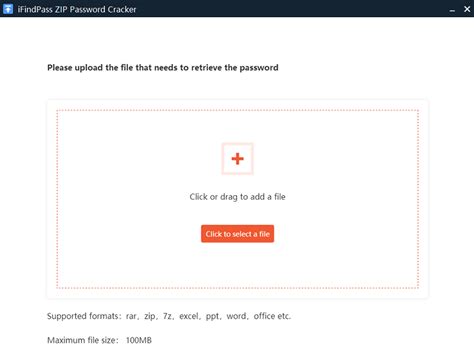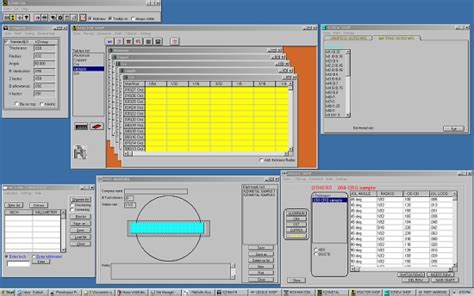Slate virtual mix rack
Author: m | 2025-04-24

HD/Library/Application Support/Slate Digital/Virtual Mix Rack/Modules. Windows: C:/Programdata/Slate Digital/Virtual Mix Rack/Modules. Note: This folder is hidden by default. slate digital - virtual mix rack - simulador de microfoneaqui neste video venho trazer o slate digital - virtual mix rack - simulador de microfone pra vc c

Virtual Mix Rack – Slate Digital
Unless you’ve been living in some analog cave (which sounds pretty cool now that I think about it), you’ve heard about Virtual Mix Rack. Steven Slate, (who a friend of mine has called the “Criss Angel of Pro Audio”) excitedly announced VMR well over a year ago and the recording community have been tapping their foot in anticipation. Finally, the day is upon us. Virtual Mix Rack is here and we’re going to look under the hood to see if it was worth the wait. Virtual Mix Rack attempts what other software developers have tried to make catch on but unfortunately have not: a modular set of plugins housed inside of a proprietary shell. No, these plugins cannot just be placed in an insert without the actual “rack” being used. This may seem a bit redundant but once you see exactly what you can do inside of the rack, you will see why Slate chose this setup. We all saw the beginnings of this approach in Slate’s Virtual Bus Compressors (review here) when we were given the VBC Rack option to link all three compressors together. The flexibility of being able to chain together or audition each individual compressor in one window proved very useful, thus the concept was taken a bit further. VMR comes in all of the usual flavors of plugin i.e.: AAX32/64, VST2 & 3, AU, and 32Bit RTAS and also employs better use of native processing to allow for more instances to be used across more tracks. Obviously this would be a must for a plugin who runs more plugins inside of it. Virtual Mix Rack employs a 500 series style rack that up to 8 “modules” can be housed. As it stands right now, there are 5 different modules available, but future expansion for many different types of mixing, effects, and mastering tools are sure to come. The 500 series style allows for a vast combination of modules that can be used in classic as well as nonconventional ways. The rack comes housed with a solo feature for each module, A/B comparison, presets for each HD/Library/Application Support/Slate Digital/Virtual Mix Rack/Modules. Windows: C:/Programdata/Slate Digital/Virtual Mix Rack/Modules. Note: This folder is hidden by default. slate digital - virtual mix rack - simulador de microfoneaqui neste video venho trazer o slate digital - virtual mix rack - simulador de microfone pra vc c Module, as well as a “global” rack preset. One great thing about the A/B comparison is you can rearrange your modules and compare the results between the two to pick the best fit. Modules can also be cloned from rack to rack in a host by holding down the “alt” button while dragging to the desired destination. A lot of detail has been used to design this rack from the sleek inviting look, all the way down to the virtual module covers that protect your rack from “virtual dust” when not in use. When using a plugin with swappable modules, automation would seem to be a daunting task but the rack takes care of this internally by assigning a letter and number system for each module. Parameters can be seen by clicking the letter above each module in the rack and module. Depending on your host, the parameters will either be simple alpha numeric or actual names. If you would like a default rack preset to show up for each loaded instance, this can be selected under the default menu that drops down when you select the star. Lastly, at the top of the rack is a small volume knob that allows for either linear or circular knob controls. That icon tricked us at first because it appears to be a volume trim knob for the rack. The rack in itself is all well and good but without modules, you pretty much just have a nicely designed box that you can place on an insert. The modules are what really shine in Virtual Mix Rack and the guys at Slate Digital have picked some of the classics to begin with. These modules have been painstakingly created using “master of all things virtually analog” Fabrice Gabriel (the mastermind behind AirEQ). Part of the reason VMR wasn’t released sooner was due to the perfectionist nature of both him and Steven Slate. Like everything Slate Digital put out, it has to be as close to the actual thing as possible. All of the little nuances of each piece of gear being modeled wereComments
Unless you’ve been living in some analog cave (which sounds pretty cool now that I think about it), you’ve heard about Virtual Mix Rack. Steven Slate, (who a friend of mine has called the “Criss Angel of Pro Audio”) excitedly announced VMR well over a year ago and the recording community have been tapping their foot in anticipation. Finally, the day is upon us. Virtual Mix Rack is here and we’re going to look under the hood to see if it was worth the wait. Virtual Mix Rack attempts what other software developers have tried to make catch on but unfortunately have not: a modular set of plugins housed inside of a proprietary shell. No, these plugins cannot just be placed in an insert without the actual “rack” being used. This may seem a bit redundant but once you see exactly what you can do inside of the rack, you will see why Slate chose this setup. We all saw the beginnings of this approach in Slate’s Virtual Bus Compressors (review here) when we were given the VBC Rack option to link all three compressors together. The flexibility of being able to chain together or audition each individual compressor in one window proved very useful, thus the concept was taken a bit further. VMR comes in all of the usual flavors of plugin i.e.: AAX32/64, VST2 & 3, AU, and 32Bit RTAS and also employs better use of native processing to allow for more instances to be used across more tracks. Obviously this would be a must for a plugin who runs more plugins inside of it. Virtual Mix Rack employs a 500 series style rack that up to 8 “modules” can be housed. As it stands right now, there are 5 different modules available, but future expansion for many different types of mixing, effects, and mastering tools are sure to come. The 500 series style allows for a vast combination of modules that can be used in classic as well as nonconventional ways. The rack comes housed with a solo feature for each module, A/B comparison, presets for each
2025-04-15Module, as well as a “global” rack preset. One great thing about the A/B comparison is you can rearrange your modules and compare the results between the two to pick the best fit. Modules can also be cloned from rack to rack in a host by holding down the “alt” button while dragging to the desired destination. A lot of detail has been used to design this rack from the sleek inviting look, all the way down to the virtual module covers that protect your rack from “virtual dust” when not in use. When using a plugin with swappable modules, automation would seem to be a daunting task but the rack takes care of this internally by assigning a letter and number system for each module. Parameters can be seen by clicking the letter above each module in the rack and module. Depending on your host, the parameters will either be simple alpha numeric or actual names. If you would like a default rack preset to show up for each loaded instance, this can be selected under the default menu that drops down when you select the star. Lastly, at the top of the rack is a small volume knob that allows for either linear or circular knob controls. That icon tricked us at first because it appears to be a volume trim knob for the rack. The rack in itself is all well and good but without modules, you pretty much just have a nicely designed box that you can place on an insert. The modules are what really shine in Virtual Mix Rack and the guys at Slate Digital have picked some of the classics to begin with. These modules have been painstakingly created using “master of all things virtually analog” Fabrice Gabriel (the mastermind behind AirEQ). Part of the reason VMR wasn’t released sooner was due to the perfectionist nature of both him and Steven Slate. Like everything Slate Digital put out, it has to be as close to the actual thing as possible. All of the little nuances of each piece of gear being modeled were
2025-04-13Do you want to make drums leap out of your mix or tame percussion to sit better within your track? Maybe you want your acoustic guitar to sound crisper, your rap vocals to hit harder, and your synth line to be snappier. With the right transient shaper, you can achieve all that and more! Experience precise control over your transients and unlock unlimited sound design capabilities with our handpicked list of the best transient shaper plugins on the market. Let’s dig in!Included in this guide:ImageProductFeaturesPriceBest OverallSlate Digital Transient Shaper Plug-InControls detected transient and tail of sourceAdjusts Gain, Warmth, Sustain, and Transient PresenceFocus sliders for precise frequency filtering5Check PriceRunner-upOeksound Spiff Adaptive Transient Processor Plug-InDetailed and adaptive transient design toolTime and frequency-specific transient controlsDepth, Sensitivity, Decay, and Sharpness Enhancer4.9Check PriceTop PickEventide Physion MK II Transient Tonal Audio Splitter Plug-InAutomatic transient and tonal separationSeven transient effects and eight tonal effectsIncludes 500+ sound presets to spark creativity4.8Check PriceTop PickWaves Smack Attack Transient Shaping Plug-InDrum and percussion-optimized transient shaping toolRefine transient level, shape, and durationSensitivity control for precise transient shaping4.7Check PriceFREEKilohearts Transient Shaper Plug-InLightweight transient shaping plug-inDirect control over Attack and Sustain for audio signalsTransient Speed, Sidechain, and Clip adjusters4.5Check Price Related Article: The Top 5 Best Limiter Plugins Of 2024 To Maximize Loudness1Take your transients to the next level with Slate Digital’s Transient Shaper plug-in, the ultimate sound-sculpting software. Whether it’s vocals, bass, percussion, or any other instrument, this flexible tool will help you shape and refine your sonic highlights to perfection. Its intuitive controls include a Transient module for gain control and saturation, a Sustain module to manipulate transient tails, a Mix knob for blending, Focus sliders for filtering, and so much more!Check out our review video below!ProsUseful for both emphasizing and blending transientsTone-shaping tools like the Warmth knob and Listen buttonWorks seamlessly as part of Slate Digital’s Virtual Mix Rack suiteConsIf you buy it outside the slate bundle, it is on the pricier end of transient shaper plug-ins 2Spiff delivers unparalleled control over your transients—cut them or boost them with great detail! Use Spiff to eliminate mouth clicks and subtle noises, soften a guitar’s pick attack, or soften the transients of an entire mix. You can also engage boost mode to enhance transients, adding palpable attack to your drums and injecting clarity and expression into your instruments. Unlike traditional transient shapers, which function like compressors and envelope shapers, Spiff relies on spectral analysis and dynamic filters to apply cuts or boosts, resulting in natural musicality.ProsAutomatically analyzes incoming signals and recognizes transients instantlyUsed by award-winning producers like James Reynolds and Joe BarresiPushes sounds forward or back in your mix without affecting the volumeConsTakes time to learn and master the complex interface 3Seamlessly split
2025-03-27